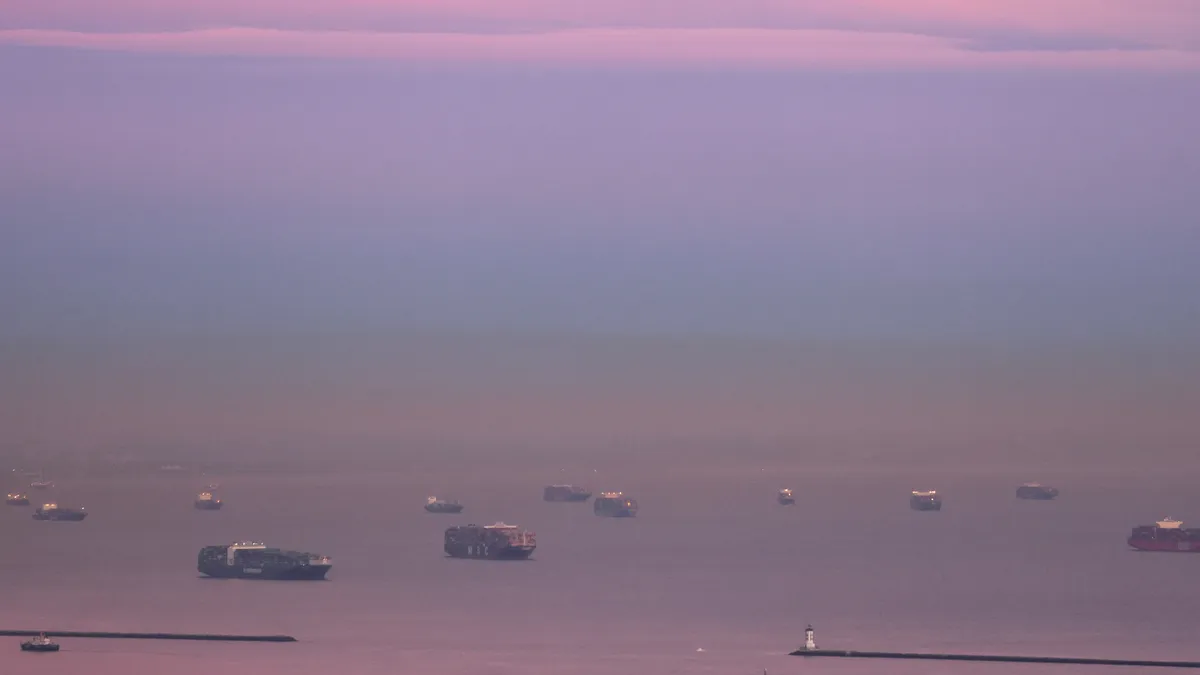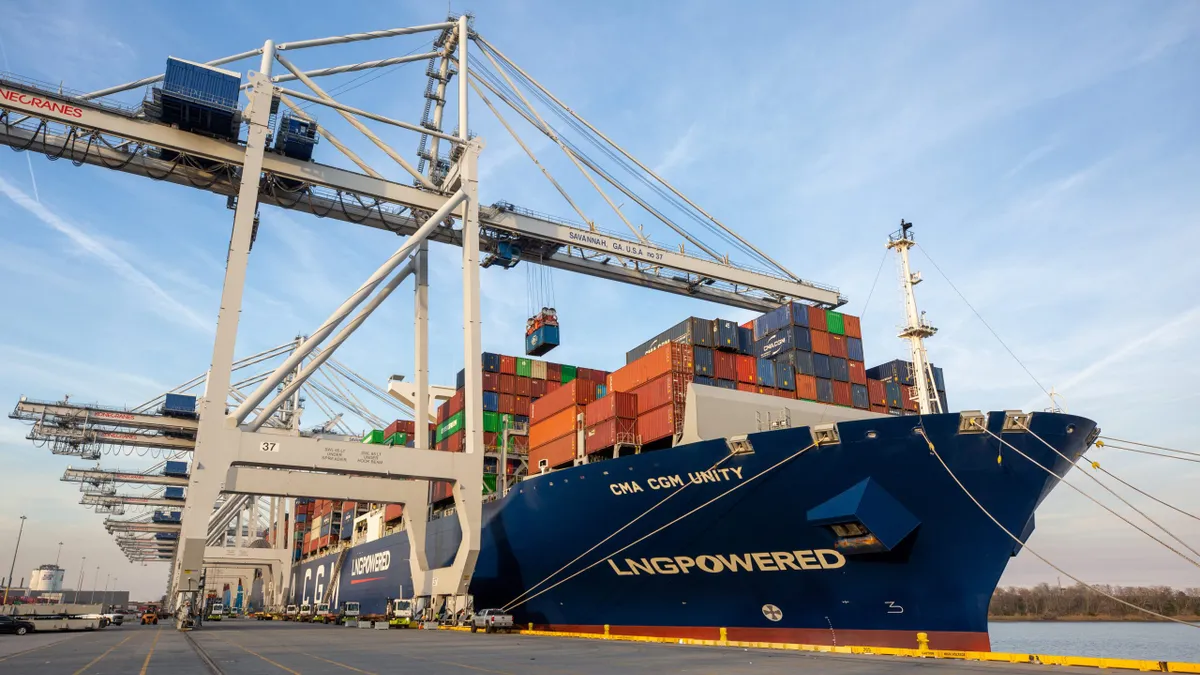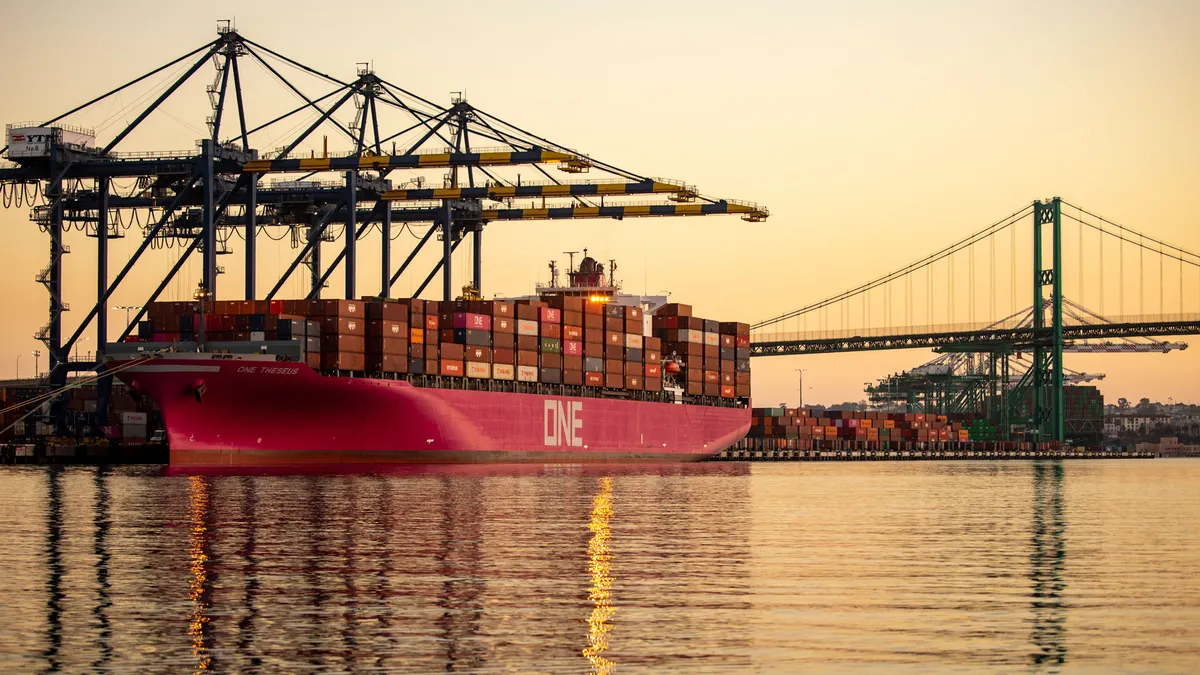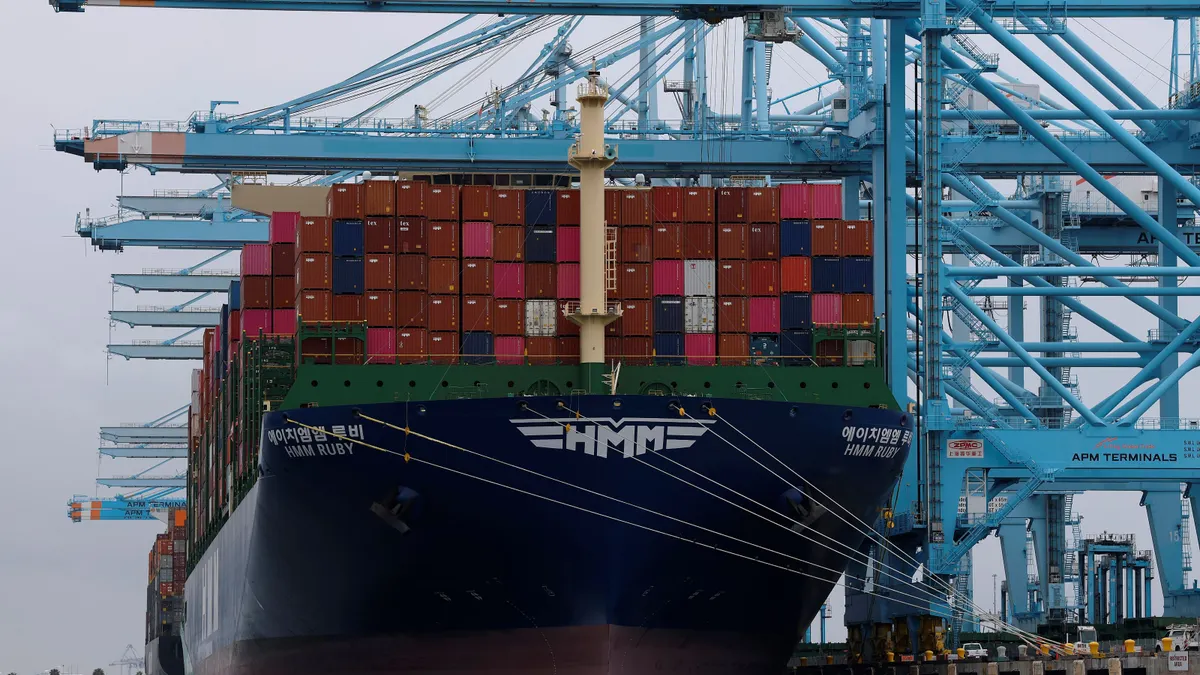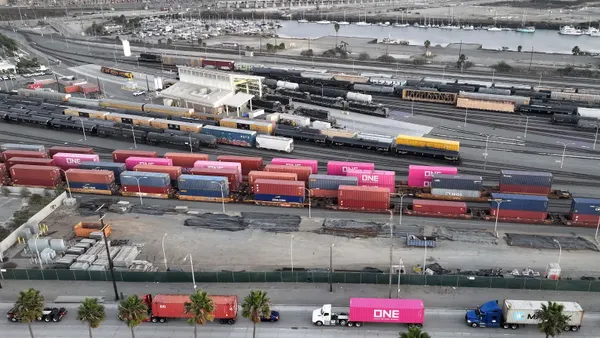When Gene Graves went through the process of renewing his ocean contracts this year, he got an unexpected response from one of the carriers he's worked with for 20 years.
"When we sent our bid out in February, they bid round one," Graves, executive director of the United Shippers Alliance, said earlier this month. "We always do a second round. So we went back for a second round and they came back and they said, 'We decided we don't want your business.'"
The company told Graves they would reach out to him when they were interested in his business again. For now, their ships are too full to commit to more capacity.
It's hard out there for a shipper these days. And that's been the case for a while now. When Supply Chain Dive first spoke with Graves in September, he said the market had "been a nightmare."
"Every month since we talked in September, every month gets worse than the previous month," he said.
Problems keep piling on for carriers and the cargo owners that rely on them to move inventory across the world's oceans. Demand for ship capacity has outstripped supply for months, a cargo ship stuck in the Suez slowed the system and created port congestion in Europe, and now an outbreak of COVID-19 cases is leading to issues at multiple gateways in southern China.
"It's absolutely crazy territory," Sea-Intelligence CEO Alan Murphy said. "There's still a mass shortage of not just capacity, but equipment, so the containers."
New issues on top of old
The issues at Yantian and other ports in southern China are having an especially large impact. Yantian handled more than 13 million TEUs in 2019, according to the latest figures available from the port. The Port of Los Angeles, the largest port in the U.S., handled more than 9 million TEUs the same year.
"It is the main gateway out of South China," Murphy said.
And carriers aren't exactly painting a rosier picture of what's unfolding, acknowledging the issues that shippers are dealing with.
The facility has resumed normal operations, but as of last week, Hapag-Lloyd CEO Rolf Jansen said it "certainly" wasn't back to normal. And as its operations are restricted it led to congestion at other nearby ports. Experts expect it could take up to a month to clear the Yantian backlog.
"As demand remains very strong at the moment, I don't think we're going to get out of it very soon," Jansen said.
With capacity tight, Home Depot has made news by deciding to charter its own ship. But this won't be an option for the vast majority of shippers. Carriers say it just won't be possible to avoid all the issues currently plaguing cargo owners.
"The current environment is one where there will be no full mitigation for the challenges," Head of Maersk North America Sales Charles Van Der Steene said. "And I think that's why internally I will be called 'Dr. Doom and Gloom.'"
And when Jansen was asked about Home Depot's decision on a recent press call, he said it won't make sense long term.
"In the long run, the prices for containers will go down to a much more reasonable level ... and then doing it by yourself will no longer be a viable option," he said.
Delays on delays
The issues are so common and widespread at this point that analysts and executives have made it a regular talking point on earnings calls.
"Ocean freight, I shouldn't go so far to say [it is] broken, but it sure is delayed," Urban Outfitters CEO Richard Hayne said at the end of last month.
Ships struggle with punctuality
As demand for ocean freight increases, carrier reliability has fallen.
"From June last year and onwards, it just absolutely tanked to unprecedentedly low levels," Murphy said of schedule reliability. The previous reference point for low schedule reliability was the 2015 West Coast labor dispute, and the industry has now "completely blown past that," he said.
Amid rising costs, difficult decisions
Costco CFO Richard Galanti said the ocean disruption is leading to increased costs.
"Price increases on items shipped across the ocean with suppliers paying up to double for containers and shipping," Galanti said.
The most recent World Container Index from Drewry showed rates up 3.3% week over week and up more than 310% YoY. Rates from Shanghai to Los Angeles reached $5,952 per 40-foot container.
Graves said the high prices and the lack of capacity have led to difficult decisions for shippers and everyone is feeling the higher price.
"I've done things in negotiating prices that I thought I would never do in my whole career," he said. "I've never negotiated a premium price." But now he is negotiating those premium prices above contract rates to get space, and he said some carriers aren't even negotiating premiums.
One of his members had a contract for $3,200 per 40-foot equivalent for shipping furniture between Vietnam and Los Angeles.
"He said 'I'm willing to pay $6,000 if you could get the space because I've got to get inventory,'" Graves said. "I went to the carrier and the response was, 'Even if you offered me $60,000 I don't have space.'"
When World Shipping Council CEO John Butler was asked by a U.S. lawmaker about shippers not getting the space in their contracts, he said they were hearing similar complaints.
"I can tell you the ocean carriers are quite serious about fulfilling their end of the bargain in service contracts," Butler said. "That's how they keep relationships with their customers."
But Steene acknowledged that even if a shipper has a contract right now, carriers are not able to commit to space. But he said many of Maersk's customers, especially its largest shippers, are aware of the current challenges in the market.
Spot rates ride a wave of demand
The problem is that delays result in sliding sailings, and when a voyage is rolled that means capacity is getting taken out of the market and those shipments have to be moved down the line. For Maersk, this happened 51 times in the second quarter.
Maersk tries to work with shippers when this happen to mitigate the disruption from the sliding, Steene said. "The discussion I have been involved in, they've all been extremely constructive," he said.
But Graves said his members who are less knowledgeable about the ocean freight market are less understanding.
"For some people, it's just, they've never seen it, they don't know the marketplace," he said.
As the ocean industry is dealing with a market that is undersupplied, it is also preparing for the traditional busy season just around the corner.
"Even if the excess demand driven by the pandemic starts to come down over the next few months, then we're also coming into the ... traditional peak season," Murphy said.
Steene said they're advising shippers to figure out what their demand is going to be "as far out as you can see" and share this with the carrier.
"Then make sure that together with your carrier partner, you devise a plan to manage that," he said, adding that they should ensure that equipment and labor are available for a vessel that is reserved.
But depending on what carrier a shipper is working with, this could be easier said than done as carriers aren't booking shipments more than five to six weeks out, Graves said.
Jansen said that Hapag-Lloyd had restrictions in place, but said it was to protect the shippers. He also said it reduces the availability of equipment before departure to keep from having too much tied up and unavailable.
"If I open up a ship now, for the end of July, or mid-August, out of China, it will be fully booked within a day," he said. "The problem is, though, that will be with a lot of people that normally don't get space protection and that in probably over 50% of the cases will not show up."
But Graves said the restrictions make it hard to plan.
"One carrier won't accept them until three weeks out," he said. "It's more than inconvenient."



